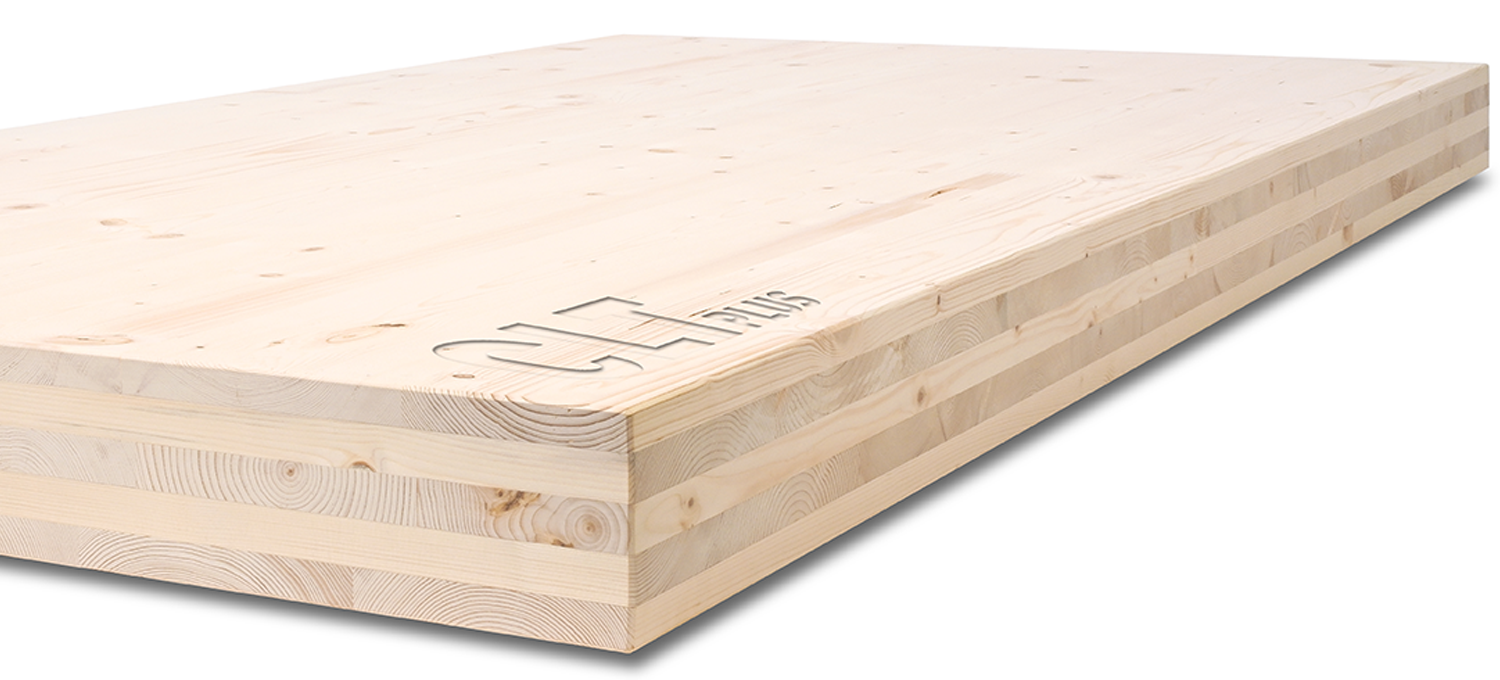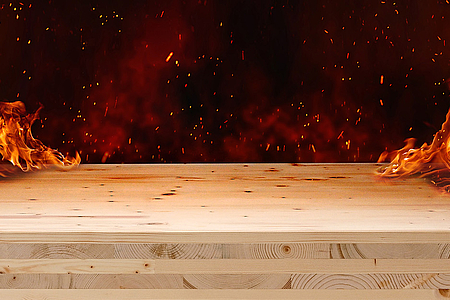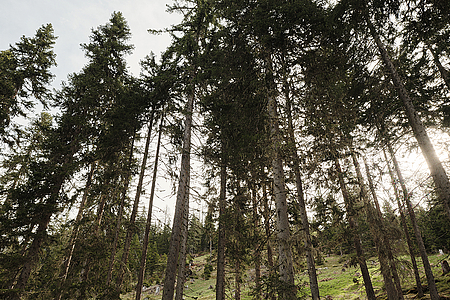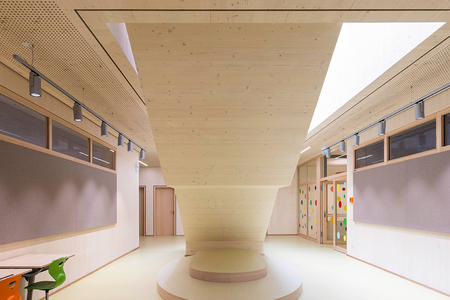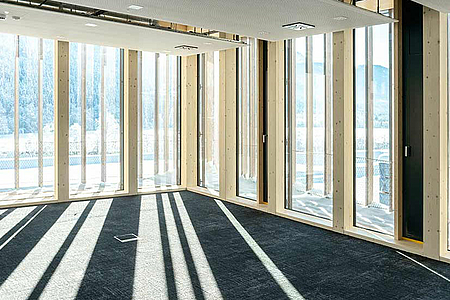Component Activation for Cross-Laminated Timber
Heating and cooling with cross-laminated timber
The eight-person research team under the direction of Thomas Schnabel in the timber construction division and Markus Leeb in the Smart Building division at the Kuchl campus of the FH Salzburg has already provided proof that component activation doesn’t just work with concrete. The use of wood activation in a tiny house project is expected to provide further specific research results during the course of the year.
The research project "aHolz”, funded by the State of Salzburg and carried out in cooperation with the two degree courses "Wood Technology and Wood Industry" and "Smart Building", deals with the possibility of heating and cooling timber houses using component activation. In this case, pipe systems are integrated into ceiling or wall elements in the same way as concrete-bound component activation. This works relatively easily with cross-laminated timber thanks to its layered structure. At any rate, the research results confirm that activation of solid wood components holds great potential for the future.
Holistic construction
Think of buildings holistically and, at the same time, design components smart – this is the future of construction. The more features that walls and ceilings combine, the more efficiently energy and resources can be saved. “Component activation with concrete is already state-of-the-art for non-residential buildings and its use in residential construction is also increasing strongly. The future lies in ecological construction methods and that means in timber construction as well. Hence the question: “Why not activate cross-laminated timber in the same way as concrete?”, Leeb says as he explains the reasons behind the research project. The first digital models returned promising results and when compared in real life, good heating and cooling performance was also forthcoming. However, in terms of thermal conductivity, concrete is 20 times superior to natural wood. This means an increased heat supply is needed in order to activate the wooden components. Conversely, the fact that storage capacity is much larger is also an advantage. Energy-efficient, storable buildings with ecological construction could therefore be temporarily removed from the grid in order to reduce utilisation at peak times.
Far-reaching building self-sufficiency seems close at hand even though it’s not yet feasible at present. Leeb and his team hope to gain more precise insights from the test phase of activated cross-laminated timber elements installed in a tiny house. In this field, the research team at FH Salzburg is an absolute pioneer.

